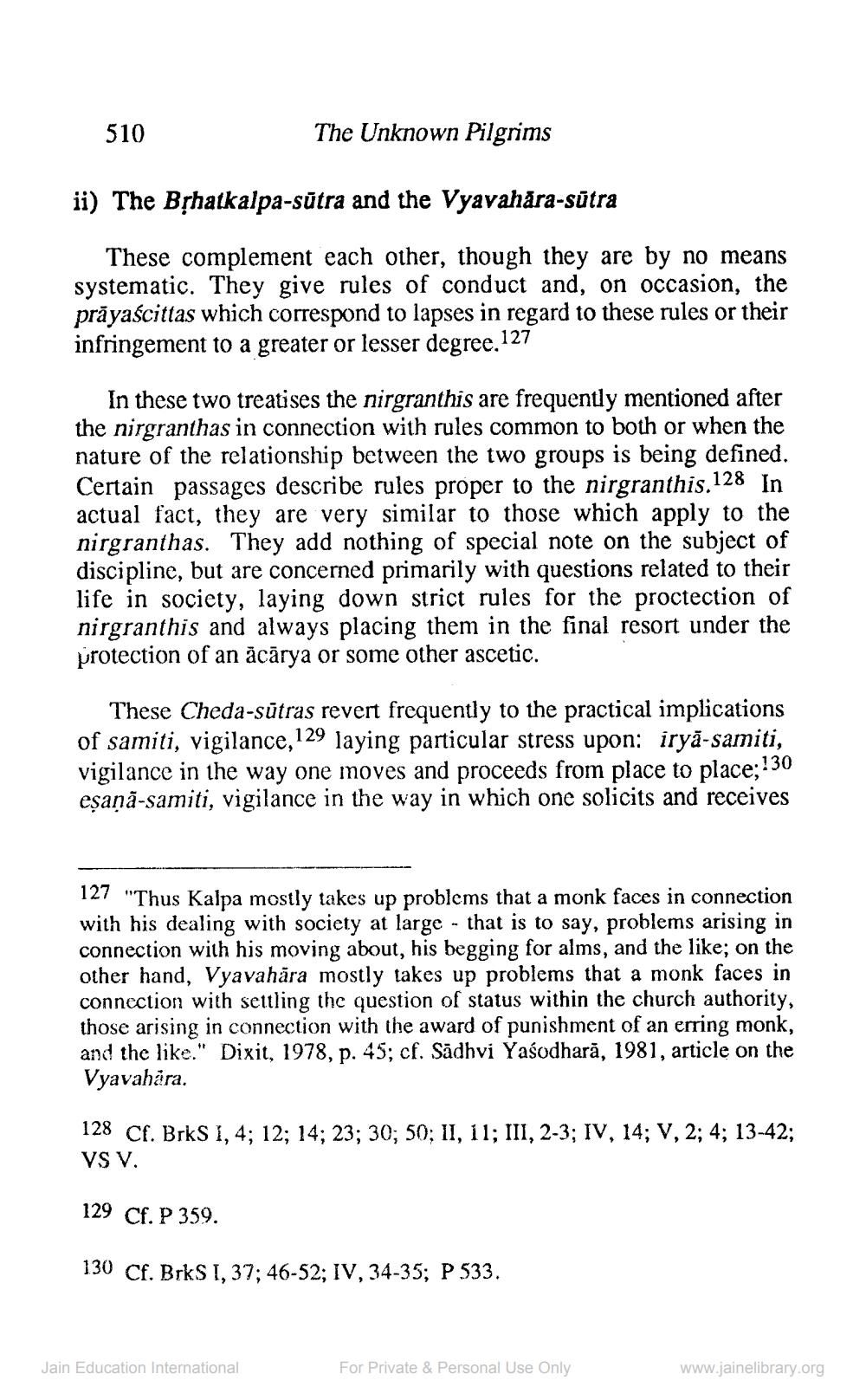________________
510
The Unknown Pilgrims
ii) The Bșhatkalpa-sūtra and the Vyavahāra-sūtra
These complement each other, though they are by no means systematic. They give rules of conduct and, on occasion, the prāyaścittas which correspond to lapses in regard to these rules or their infringement to a greater or lesser degree 127
In these two treatises the nirgranthis are frequently mentioned after the nirgranthas in connection with rules common to both or when the nature of the relationship between the two groups is being defined. Certain passages describe rules proper to the nirgranthis.128 In actual fact, they are very similar to those which apply to the nirgranthas. They add nothing of special note on the subject of discipline, but are concerned primarily with questions related to their life in society, laying down strict rules for the proctection of nirgranthis and always placing them in the final resort under the protection of an ācārya or some other ascetic.
These Cheda-sūtras revert frequently to the practical implications of samiti, vigilance,129 laying particular stress upon; iryā-samiti, vigilance in the way one moves and proceeds from place to place;:30 eșaņā-samiti, vigilance in the way in which one solicits and receives
127 "Thus Kalpa mostly takes up problems that a monk faces in connection with his dealing with society at large - that is to say, problems arising in connection with his moving about, his begging for alms, and the like; on the other hand, Vyavahāra mostly takes up problems that a monk faces in connection with settling the question of status within the church authority, those arising in connection with the award of punishment of an erring monk, and the like." Dixit, 1978, p. 45; cf. Sadhvi Yasodhară, 1981, article on the Vyavahára.
128 Cf. Brks 1, 4; 12; 14; 23; 30; 50; 11, 11; III, 2-3; IV, 14; V, 2; 4; 13-42; VS V.
129 Cf. P 359.
130 Cf. Brks I, 37; 46-52; IV, 34-35; P 533.
Jain Education International
For Private & Personal Use Only
www.jainelibrary.org




